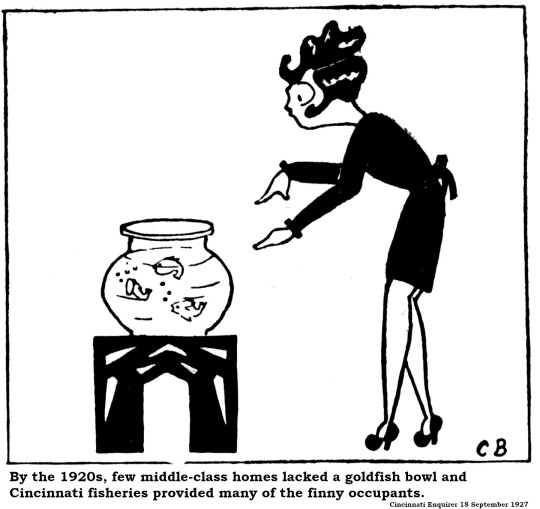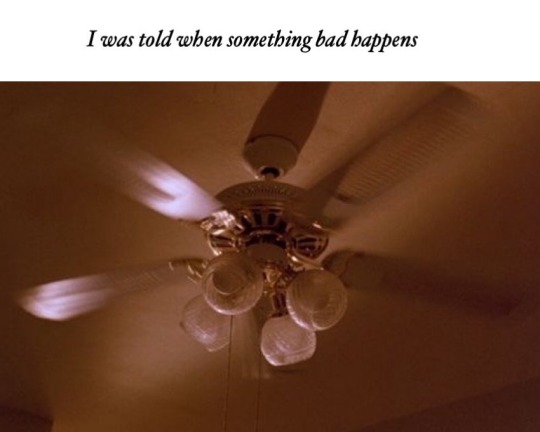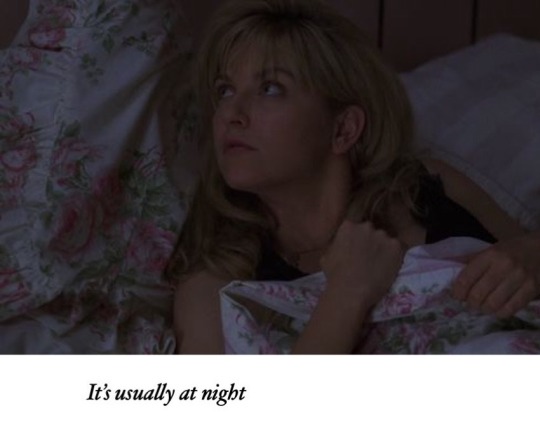#mount airy
Explore tagged Tumblr posts
Text




he holds me in his arms it’s no good
14 notes
·
View notes
Text

💙 All you have to bring is your love of everything 💙
#such a beautiful album#music#nicole dollanganger#married in mount airy#my collection#cassette#gloomy coquette#the poconos#mount airy#mount airy lodge#poconos
20 notes
·
View notes
Text

Maple Drive, Mount Airy, North Carolina.
21 notes
·
View notes
Text
For Half A Century, Cincinnati Goldfish Thrived Because Of Our Untreated Water
Just south of the Mount Airy water towers lies a large, grass-covered lawn with a small playground tucked away in the corner. No historic marker identifies this plot, although it is an important site in the history of a long-forgotten Cincinnati industry. For fifty years, up until the 1970s, this meadow was occupied by a dozen ponds filled with goldfish because Cincinnati was among the largest producers of goldfish in the United States. It's true. Here is the Cincinnati Enquirer [4 August 1929]:
“Few of the people who buy fish realize that Cincinnati is one of the centers for goldfish breeding. More than 100 goldfish breeding ponds surround Cincinnati within a radius of 15 miles. Many of these are transient, the owner raising stock during the season and draining the pond during the winter, but several of them almost outdistance Japanese rivals in quality and output.”
It was estimated that Cincinnati pet stores sold nearly 5,000 goldfish every day in the late 1920s, most locally raised. Twenty years later, according to the Cincinnati Post [30 April 1946] Maryland was the largest producer of goldfish in the United States, but second place was held by southwest Ohio and southeast Indiana. At that time, according to the Post, there were approximately 50 permanent goldfish breeding ponds in the Cincinnati region.
Goldfish were first introduced to Cincinnati in the later 1850s and Cincinnatians soon became avid collectors. The first vendors to sell goldfish in Cincinnati were florists who appeared to think of these colorful fish as an adjunct to home décor, sort of a living bouquet, if you will.
Goldfish thrived in Cincinnati because our water supply was pumped unfiltered and untreated straight from the Ohio River. Cincinnati goldfish fanciers developed the opinion that goldfish never needed to be fed, because Cincinnati’s water was so loaded with worms and other tiny critters. A local newspaper, the Star In The West [19 November 1859] chastised those who did not feed their goldfish:
“Every other pet is expected to eat, but these gold-carp are expected to subsist on – nothing! ‘But don’t they eat the animalculae?’ Nonsense! Give them a few small earthworms, or anglers’ gentles, twice a week.”
Despite such advice, the belief persisted that Ohio River water contained enough living matter to feed our finny friends. The Cincinnati Gazette [17 March 1875] in a column about goldfish, insisted that “small worms, such as are common to the water, suffice for their food in general.” It appears that our ancestors were perfectly happy to quaff tap water in which small worms (or animalculae) were common!

Wormy or not, Ohio River water was clear enough to cause household hazards, as the Cincinnati Star [8 January 1875] reported:
“A goldfish globe, filled with water, hanging in the window of a house, set the casement on fire one morning recently; the globe acting as a burning glass. Had the family been absent, a conflagration might have resulted, and its origin unaccountable.”
A decade later, goldfish had become big business in Cincinnati as proved by one of the regular Ohio River floods. Hugo Mulertt was a florist with shops downtown on Race Street and on Freeman Avenue in the West End. Like many Cincinnati florists, he sold a lot of goldfish along with bouquets and nosegays. He operated his own fishery out near Spring Grove Cemetery and, according to the Cincinnati Enquirer [24 February 1884], lost most of his exotic stock when the floodwaters that year overwhelmed his fish ponds.
“The backwater from Millcreek flooded Hugo Mulertt’s gold-fish nursery out back of Spring Grove and carried away some thousands of fish of all kinds – Japanese fringe-tails, telescopes, double-tails, hog-noses, tumblers, piebalds, mottled beauties, and a hundred other rare kinds that you and I have never heard of.”
With all these delectable and collectable fish swimming around in open ponds, it is no surprise that Cincinnati goldfish-mongers encountered a veritable menagerie of critters gathering to eat up their profits. Mr. Mulertt kept a rifle to shoot hungry snakes, but listed among his enemies geese, herons, ducks, turtles, muskrats, cranes, kingfishers and crawdads. The crawdads, he said, didn’t eat his fish, but their burrows undermined his ponds.
Robert C. Dolle, whose grandfather excavated those Mount Airy ponds, contended with mud turtles, kingfishers, herons and mink. At Coldstream Farms in Northern Kentucky, the animals responsible for “shrinkage” included mink, snakes, mice, rats, racoons, cats and even insects. According to the Enquirer [4 August 1929]:
“A certain insect will catch a fish between the dorsal fin and the tail, leaving a small mark which is quickly filled with silver scales. These spots are often seen in aquaria.”
The Schlosser family, who managed Coldstream’s fishery for nearly a century, killed as many as a dozen mink every year to save their exotic goldfish.
And let’s not forget human predation. The late 1930s brought a fad that you can blame on your grandparents – goldfish swallowing. Medical experts quoted in the Cincinnati Post [8 April 1939] advised collegiate faddists not to swallow too many live goldfish at all. Or, if peer pressure overwhelmed them, to scale the little suckers first.
In addition to the Schlossers in Fort Mitchell and Mr. Dolle in Mount Airy, there was also a large fishery on Compton Road in Wyoming. That operation was owned by Dr. Charles Goosmann, a radiologist with offices on Seventh Street. In November 1930, Dr. Goosmann learned that predators included humans because a thief or thieves walked off with more than 1,500 goldfish from his breeding pools.
How would one put a value on that theft? This proved to be more than an academic question when tax time rolled around. In 1958, the Ohio Board of Tax Appeals considered the case of James C. Denier, who had taken over Mr. Dolle’s Mount Airy ponds while maintaining a large breeding pond on Poole Road in Colerain Township. According to the Cincinnati Enquirer [25 July 1958], the state tax commissioner just “guesstimated” the value of goldfish in Mr. Denier’s many ponds and decided that the tax bills for 1953 and 1954, amounting to less than ten dollars in total, were wildly out of whack and determined that Mr. Denier owed $24,000 for 1953 and $42,000 for 1954. Mr. Denier appealed and managed to get his tax bill lowered to $1,700 for each year.
By then, the market for goldfish had softened considerably. Cincinnati breeders turned their ponds into sheep pastures. Sheep grazed among the Denier ponds in Mount Airy for a decade or more until the City of Cincinnati acquired the property and drained the goldfish ponds in 1977. Despite an appeal by the Mount Airy Town Council for ideas, the land remains mostly vacant.

8 notes
·
View notes
Text
#JHarry#music#spotify for artists#spotify#spotify music#chicago#los angeles#dallas#paris#Bahía Blanca#Rosario#Karlshamn#Pembroke Pines#mount airy#round rock#birmingham#newport news#Cincinnati#miami#richmond#fort mill#clifton#evansville#east lansing#denver#colorado#brooklyn#new york#indianapolis#rock hill
22 notes
·
View notes
Text







First round of plants for Malelani Cafes outdoor planters - have just a few more things to put in once a few perennials are finished blooming. Can't wait for these to get rocking and rolling! Some funky perennial and annual combos, plus a little herb station. Thinking about putting in another smaller banana pup to the mix!
#gardedning#container gardening#philadelphia#timelapse#work#landscaping#mount airy#NW philly#germantown#freelance gardener#seasonal container#summer#annuals#perennials#color#texture
3 notes
·
View notes
Text







[...for the unexpected taste... I want to lay down in it. [ Laughs ] ...of some South Carolina cooking. Official member of Flavortown, without question. So I'm here in Mount Airy, Pennsylvania, about eight miles northwest of downtown Philadelphia, to check out a joint]
#s17e09 from pound cake to pot pie#guy fieri#guyfieri#diners drive-ins and dives#south carolina cooking#unexpected taste#official member#mount airy#downtown philadelphia#laughs#flavortown#question#pennsylvania#joint
1 note
·
View note
Text



I sing the lord’s euthanasia blues
#mine#rural gothic#digital camera#my pics#my photgraphy#winter#american gothic#married in mount airy#lana del rey#hayden anhedönia#lizzy grant#small town gothic#southern gothic#preachers daughter#trees#tw spiders#spider web#western nights#katie jane garside#film photography#photography#brainwashedangel#ethel cain
941 notes
·
View notes
Text









✧・゚: ・ 𝔡𝔬𝔫'𝔱 𝔯𝔢𝔠𝔞𝔩𝔩 𝔴𝔥𝔞𝔱 𝔴𝔢 𝔴𝔢𝔯𝔢 𝔡𝔯𝔦𝔫𝔨𝔦𝔫𝔤 𝔟𝔲𝔱 𝔦 𝔯𝔢𝔪𝔢𝔪𝔟𝔢𝔯 𝔱𝔥𝔦𝔫𝔨𝔦𝔫𝔤 𝔱𝔥𝔢𝔯𝔢 𝔴𝔞𝔰 𝔰𝔬𝔪𝔢𝔱𝔥𝔦𝔫𝔤 𝔳𝔢𝔯𝔶 𝔰𝔱𝔯𝔞𝔫𝔤𝔢 𝔦𝔫 𝔱𝔥𝔢 𝔞𝔦𝔯 ⋆·˚ ༘ *
#girlblogging#hell is a teenage girl#girl interrupted#nicole dollanganger#married in mount airy#natural born losers#poachers pride#lana del ray aesthetic#lana del ray aka lizzy grant#lana del rey#lana unreleased#ultraviolence#sky ferreira#girl icons#i need a lobotomy#lizzy grant#this is what makes us girls#dollette#dollcore#music#dreamy#2014 revival#thoughts#this is a girlblog#female hysteria#cherry coke#trailer park princess#flowers of flesh and blood#aesthetic#the virgin suicides
399 notes
·
View notes
Text

married in mount airy vibes ♡
9 notes
·
View notes
Text

nicole dollanganger fan meet up
#nicole dollanganger#natural born losers#married in mount airy#trailer park princess#this is what makes us girls#morute#creepy coquette#grandmacore#pawn shop blues#lizzy grant#i believe in unicorns#the virgin suicides#lisbon sisters#dollette#bambi girl#angel girl#sparkle jump rope queen#heavenswaif#waifspo#esoteric#tumblrina#doll parts#dollcore#antique#heart shaped bed#poachers pride#nymph3t#red scare#trashy coquette#trash magic
259 notes
·
View notes
Text




The indoor pool at Mount Airy Lodge, pictured in the 1960s and 2005, before demolition.
261 notes
·
View notes
Text






married in mount airy
#ethel cain#girlblogging#lana del rey#coquette#hayden anhedönia#moodboard#preachers daughter#i’m just a girl#nicole dollanganger#married in mount airy#vintage americana#pastel gothic#southern gothic#runaway bride
123 notes
·
View notes
Text




#nicole dollanganger#natural born losers#2014 tumblr#married in mount airy#southern goth#doll#dollette
260 notes
·
View notes
Text




Laura Palmer / Sometime After Midnight, Nicole Dollanganger
#twin peaks#web weaving#laura palmer#fwwm#fire walk with me#twin peaks birchblood#twin peaks fire walk with me#leland palmer#laura and leland#comparatives#nicole dollanganger#married in mount airy#tw incest#cw incest
280 notes
·
View notes
